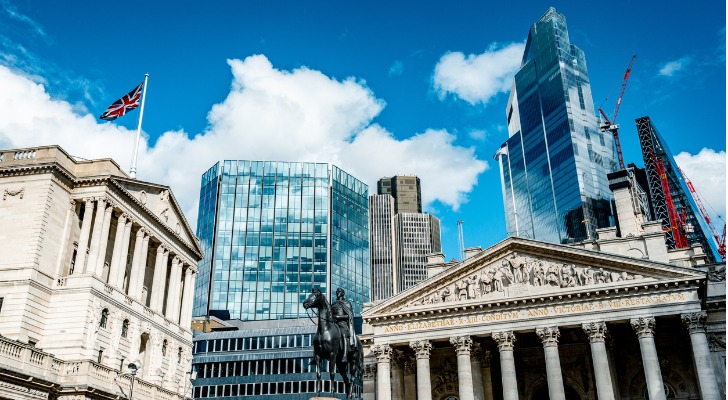Most large economic systems today use fractional reserve banking to stabilize and grow their economies. With factional reserve banking, banks can lend out deposits with interest to amplify the economy. The Federal Reserve was founded in 1913 to better regulate the banking market so that banks didn’t run out of money and people could get access to more lending opportunities. Knowing how fractional reserve banking works can give you more trust in the banking system and lead to better money decisions to grow your wealth.
You can also work with a financial advisor who can help create a financial plan or manage assets for you.
Fractional Reserve Banking and How It Works
Fractional reserve banking is a system where banks are only required to keep a fraction of bank deposits on hand. That means your bank holds a percentage of your money, lending the rest of it out or investing the money to grow their total available funds. Banks can use these loans to stimulate the economy, making cash more available to those who need it. This provides more opportunities for people to do things like buying a house or starting a business.
Historically, the Federal Reserve set the reserve requirements on transactional accounts — such as checking and savings accounts — at 10%. So, if you had $10,000 in your savings, your bank could use $9,000 of it.
However, as of March 26, 2020, the Federal Reserve no longer requires US banks to keep money in reserve for transactional accounts. The idea is that this money is better used if freed up to lend, stimulating the economy. With these loans, banks can charge interest to pay for their expenses and grow their business, freeing up more money to be lent.
What Is the Fractional Multiplier Effect?
The fractional multiplier effect, or the deposit multiplier, is how banks can create money based on each unit of money they hold. This multiplier is a rough estimate based on the funds held in reserve to forecast how much money can be made off of the remaining money. It’s simple to calculate.
To start, divide 1 by the percentage held in reserve. In this example, we’ll use the former requirement of 10%. Once you have this number, you have your deposit multiplier.
Deposit multiplier = 1 / 0.10
Deposit multiplier = 10
That means that, for every $1 left in reserve, you can estimate that banks will create $10. This estimate breaks with the fact that banks are no longer required to keep a reserve percentage. Still, the equation illustrates a powerful effect: the lower the money in reserve, the greater the amount that can be created through lending.
Fractional Reserve Regulation

Before founding the Federal Reserve in 1913, the U.S. government established the United States central banking system with the National Bank Acts of 1863 and 1864. These acts set the reserve requirements of all banks at 25%, regardless of bank or account type.
With the introduction of the Federal Reserve Act in 1913, the Federal Reserve was created and given the power to require lenders to hold money in reserves. From 1913 until 2020, the number of necessary reserves varied from 7% – 13%, depending on the type of bank.
Since 2020, banks have not been required to hold any of the money in your savings or checking accounts on reserve. This was done in an attempt to stimulate the economy. And it could change again if the Federal Reserve deems it necessary.
Pros and Cons of Fractional Reserve Banking
As with any kind of financial system, there are pros and cons. Now that you know what fractional reserve banking is and how it works, let’s discuss whether the benefits outweigh the potential risks.
Pros of Fractional Reserve Banking
- Allows banks to utilize the money that would otherwise just sit unused.
- Lets banks lend money to individuals and businesses who need it, growing the economy.
- Through these loans, banks collect fees and interest, growing returns to fund new loans.
Cons of Fractional Reserve Banking
- This increases the likelihood of bank failure if too many people withdraw their money at once. This happened during the Great Depression, just 16 years after the Federal Reserve was created.
- Some economists believe that the economy will be overstimulated and ultimately crash if there aren’t enough reserves.
How Fractional Reserve Banking Affects Consumers
Fractional reserve banking affects consumers by making it easier to access credit and loans. Because banks can lend out a large portion of the money deposited, they have more funds available to offer mortgages, car loans, personal loans and credit cards. This system helps consumers borrow money for major purchases and investments that they might not otherwise be able to afford upfront.
At the same time, fractional reserve banking can influence the interest rates consumers pay on loans or earn on deposits. When banks lend out more money, interest rates may fluctuate based on how much money is circulating in the economy. Consumers might benefit from lower borrowing rates during certain times, but may also see lower interest earned on savings accounts due to the way banks manage deposits.
Another important impact is that fractional reserve banking means not all deposited money is held in the bank at once. While this might sound risky, banks are insured by the FDIC up to certain limits. This protects consumer deposits even if a bank experiences financial trouble. For most people, fractional reserve banking works quietly in the background, helping maintain access to credit while keeping deposits safe.
How Investors Can Use Fractional Reserve Banking
Investors can gain more access to credit and capital through fractional reserve banking. Since banks lend out a portion of deposits to borrowers, investors may find it easier to secure financing for business ventures, real estate investments or margin accounts for trading. This system creates opportunities to leverage borrowed money to pursue larger investments that might otherwise be out of reach.
Another way investors can use fractional reserve banking is by investing directly in financial institutions that participate in this system. Banks earn income through loan interest and fees, and this revenue supports profits for shareholders. By owning bank stocks, exchange-traded funds (ETFs) or mutual funds that focus on the financial sector, investors can indirectly benefit from the lending activity driven by fractional reserve banking.
Investors can also use their knowledge of fractional reserve banking to make more informed decisions about economic trends and risks. Since the system influences credit availability and interest rates, investors who monitor lending activity and monetary policy can better anticipate shifts in the markets. This can guide asset allocation, such as adjusting exposure to stocks, bonds or cash depending on lending conditions and economic cycles.
Alternatives to Fractional Reserve Banking
A full reserve system is the most obvious alternative to a fractional reserve banking system. This is where banks keep 100% of deposits in reserve, meaning that all deposits are precisely where you put them. Of course, this loses the benefit of a fractional reserve system, where banks can create more money by lending your deposit out.
Another system the Federal Reserve has been exploring is the Central Bank Digital Currency (CBDC). While today the only form of currency available is physical, the Fed is researching the possibility of a centralized digital currency. Currently, this alternative is in the preliminary stages of the Fed assessing benefits and risks, as well as taking public feedback.
Bottom Line

Fractional reserve banking oblilges participating banks to only keep a fraction of your deposit in reserve, lending out the rest. This generates returns for banks through fees and interest rates. While there were reserve requirements for U.S. banks for over 150 years, that’s no longer the case. As of March 2020, banks are no longer required to keep reserves for transactional accounts, such as checking or savings accounts. While that may seem risky, the benefits of this system allow our economy to keep growing.
Tips for Better Money Management
- Banking is just one piece of your finances. A financial advisor can help you set goals and implement your financial plan. Finding a financial advisor doesn’t have to be hard. SmartAsset’s free tool matches you with vetted financial advisors who serve your area. You can have a free introductory call with your advisor matches to decide which one you feel is right for you. If you’re ready to find an advisor who can help you achieve your financial goals, get started now.
- Finding the right bank for you is essential to your finances. That’s why SmartAsset reviewed and compared numerous banks nationwide based on what they offer and their important features. Here’s a roundup for 2022.
Photo credit: ©iStock.com/Boris Jovanovic, ©iStock.com/CHUNYIP WONG, ©iStock.com/EmirMemedovski
